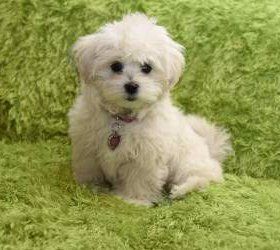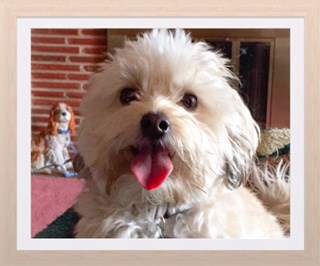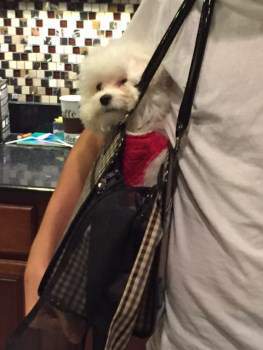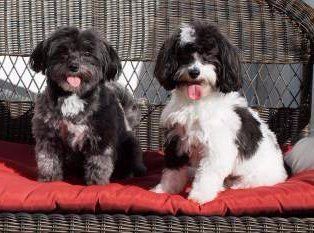Call us: 555-555-5555
Facts (Main Page)
Maltipoo Facts
There is a lot to know about this adorable hybrid dog! So, let’s look at all of the facts that you should know if you have a Maltipoo or are planning on bringing one into your family.
1)
The spelling for this breed varies… The American Canine Hybrid Club and the Designer Dogs Kennel Club (DDKC)Facts about Maltipoo dog spell it as: Malt-A-Poo. The International Designer Canine Registry , the National Maltipoo Club and the Maltipoo Club of America spells it as Maltipoo and the North American Maltipoo/Maltepoo
Club and Registry as you can see offers 2 different spellings.
2)
The CKC recognizes this breed as a hybrid and classifies it as a non-purebred miscellaneous with the spelling of Maltipoo.
3)
Most adults have a range between 5-12 pounds (2.27-5.44 kg). The NMC and the MC of American do have a breed standard of this same weight.
4)
There are 1st generation and 2nd generation dogs. First generations will be a direct descendant of a Maltese and a Poodle.. 2nd generations are the result of 2 Maltipoos.

Shanti, 5 months old
Photo courtesy of Alessandra (New Jersey)
5)
Most often a Toy Poodle is paired with a Maltese, although some breeders will use a Miniature Poodle, which results in larger puppies.

Jaxon, 3 years old
Photo courtesy of Wanda
6) Colors vary greatly, although most are not a deep, dark solid color. This is because with 1st generations, one parent is a Maltese and these are solid white dogs. When a breeding is done, the solid white of one parent will mix with the coloring of the other parent. This most often results in a faded coloring. For example, a dark brown sire paired with a white Maltese will most often produce tan puppies. This fading is also referred to as diluted coats. Update:
See also, Maltipoo Coat Color Changes
7)
One of the most popular coat colors is apricot.
8)
Browns will be referred to as chocolates, toffees and other terms, since there are no official colors.
9)
Due to different breeding
practices and also with genetics playing a role, there are 3 different coat possibilities: . Soft and silky, Thick and curly or Wiry and wavy. The wiry coat is the least desirable and is often due to poor breeding practices.
10)
A female should be between the ages of 2 and 3 years old before being allowed to mate and carry a litter.
11)
Average life span
is 14 years old, with an expected range of 12 to 16 years.
12)
Small dogs typically live longer lives than larger breeds.
13)
While most designer clubs do not have an official weight range, a full grown Maltipoo that is under 5 pounds often has many more health problems than those closer to the 5, 6, 7 or 8 pound range. Most common are health issues, luxating patella and hip dysplasia.
14)
Tear stains are common on this breed, especially for those with light coats. Culprits can be anything from red yeast infection to dyes that leak out of deeply colored plastic food bowls.
15)
The behavior and temperament of the Maltipoo is friendly, loyal, playful and affectionate. While they may bark at strangers, they are not watch dogs. These ARE inside dogs and cannot tolerate outdoor conditions for very long. Owners must be prepared to keep their dog in the house, only bringing him or her outside for bathroom needs, walks, exercise and play time… This breed will not do well if left alone outside for long periods of time.
14)
Baths should be given every 3 weeks…more than this can cause skin to dry out.
15)
Teeth should be brushed daily and professional cleanings should be done at least every other year.
16)
Training
can begin as early as 8-weeks-old, with “Sit” often being the first command that is taught.

Papi, 6 and 1/2 months old
Photo courtesy of Gabby

Lady (1 yr, 9 months) and Tramp (1 yr, 7 months)
Photo courtesy of Sabrina Summerville-Ebron
17)
When switching foods, this should be done slowly as a fast change can cause stomach problems
and other health issues. It is recommended to slowly change over the course of 4 weeks.
18)
Many Maltipoos get along very well with cats and other dogs in the home… However before bringing home a new pet, one should test the 2 animals to see if they tolerate each other.
19)
It is a fact that some people think that “designer” or “crossbreed” dogs are “terrible” and are only the product of “back yard breeders”. However, it must be noted that ALL purebred dogs that we have today are the result of breeding 2 different canine breeds together. For example, most toy sized dogs that we have today are the result of generations of mating larger dogs with smaller dogs. If no one ever bred together 2 different types of dogs, we would not have all of the purebreds that we have in today’s world.
20)
A Maltipoo is NOT a “mutt”. A mutt, by definition, is a dog of unknown origin and ancestry. Since the Maltipoo is the result of intentionally breeding of a Poodle and a Maltese, this designer dog certainly is not a mutt (or a mongrel).
21)
They do very well with children, however since most are very small and fragile they are recommended for older children. With this in mind, younger children can be taught how to properly handle the dog and should be supervised until they are well used to how to hold and carry the Maltipoo.
22)
One of the reasons why this crossbreed is so popular is because they retain puppy-like characteristics well into adulthood. While they can easily be trained (by following proper guidelines), most will enjoy romping around and playing with you at an age when other types of dogs would rather sit and watch the action. They are known for having a remarkable temperament.
23)
Susceptible to heat changes, one must be careful in the summer
to stay in the shade when playing outdoors and to take walks closer to dawn and dusk on very hot days. Booties can protect the paws from hot sidewalks. In cold winter months, small Maltipoo dogs should be protected with a sweater and time outside in very cold weather should be limited.
25)
They shed very lightly, and the amount of shedding depends quite a bit on the level of Poodle genes that have been passed down. This light shedding along with having hair vs fur, causes many to list the Matlipoo as hypoallergenic
even though some people are allergic to dander which is present on all breeds.
26)
This dog is also known, less commonly, as the: Moodle, Multapoo, Multipoo, Malte-Poo, Maltapoo, Multapoo, Multi-Poo, Maltese-Poodle, Malt-oodles, MaltiPoodle. A lot of these alternatives names are dropping away as the Maltipoo becomes more popular.
See also: What is a Maltipoo
Share Us
Share
Tweet
Share
Mail
All content is protected by US and International copyright laws. PetMaltipoo.com. All rights reserved.
We are a participant in the Amazon Services LLC Associates Program, an affiliate advertising program designed to provide a means for us to earn fees by linking to Amazon.com and affiliated sites.



